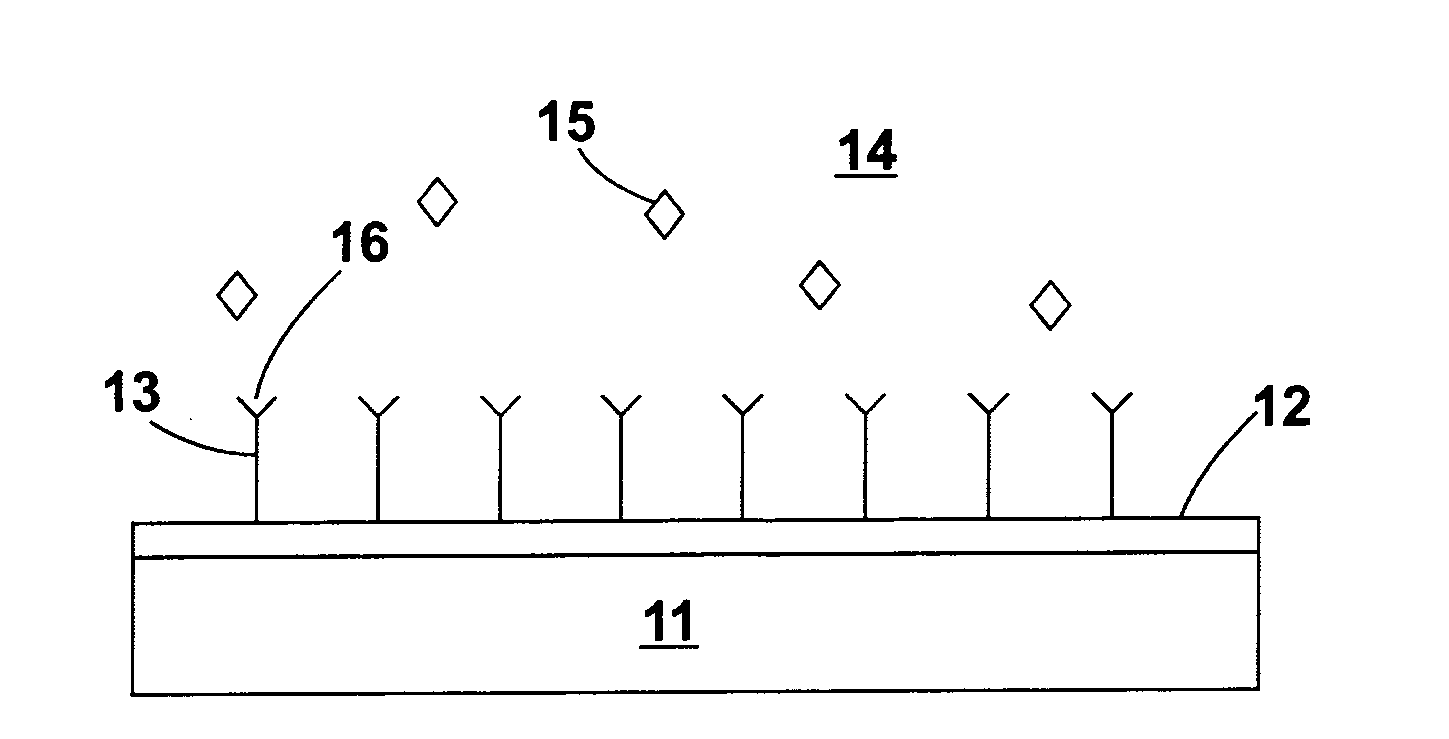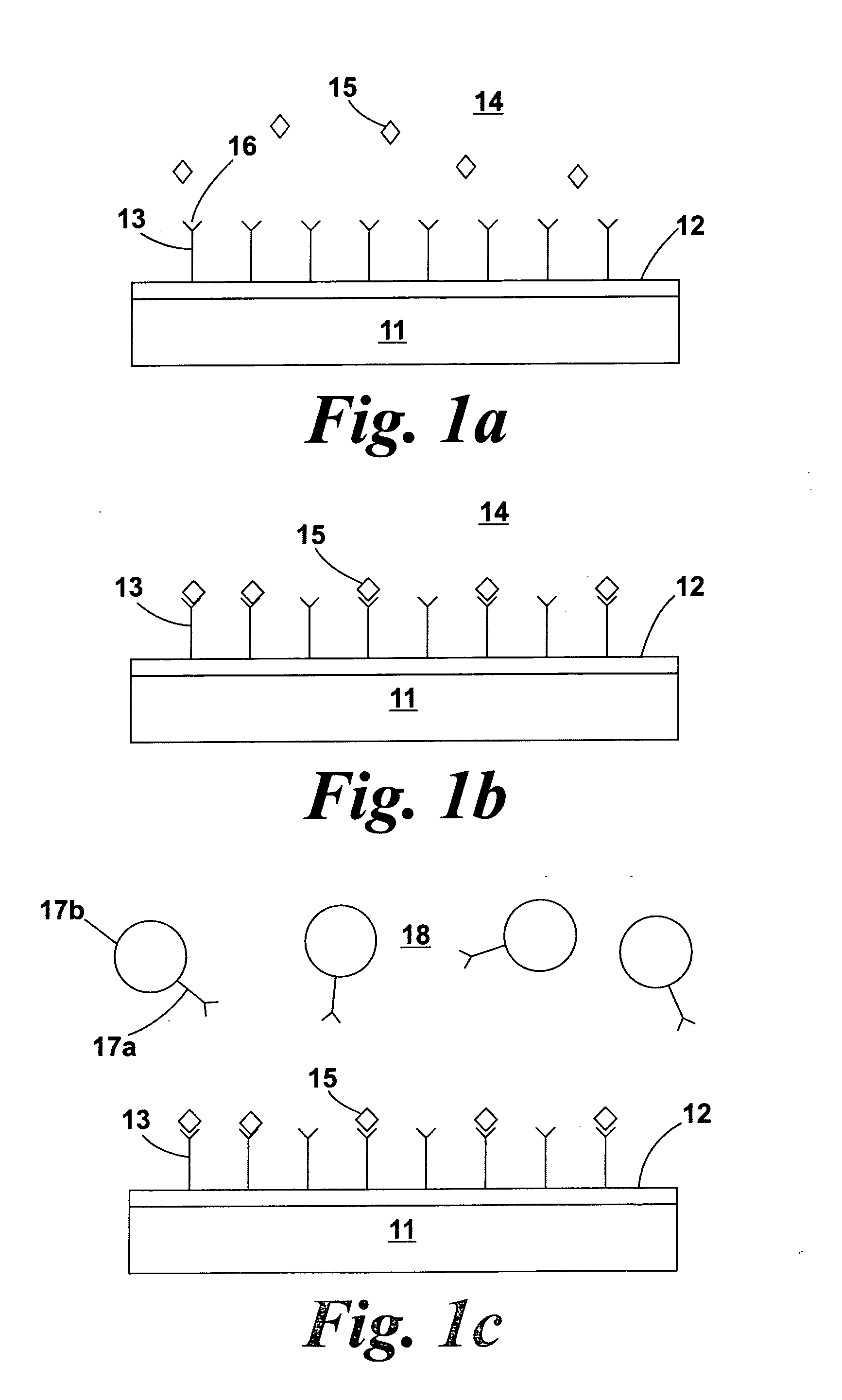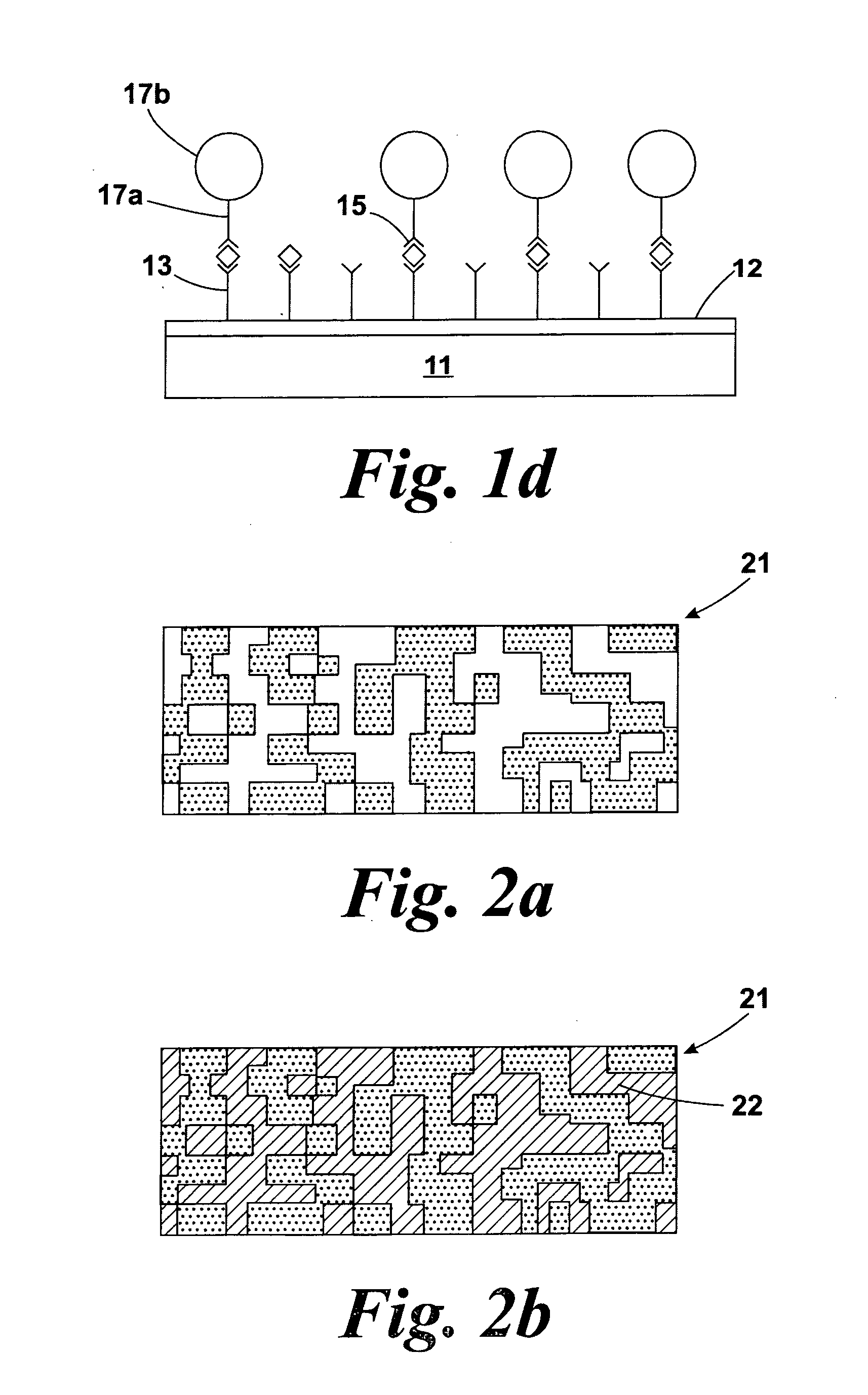Methods and apparatus for particle detection
a particle detection and particle technology, applied in the field of methods and apparatus for particle detection, can solve the problems of complex substrate structure, increased detector cost, and inability to be easily re-used
- Summary
- Abstract
- Description
- Claims
- Application Information
AI Technical Summary
Benefits of technology
Problems solved by technology
Method used
Image
Examples
Embodiment Construction
[0037]FIGS. 1a to 1d have already been described as part of the background to the invention.
[0038]FIGS. 2a to 2e illustrate various steps of a method of preparing a substrate for detection of a compound.
[0039]It should be noted that certain embodiments of the present invention are performed directly on the substrates 21 which originally comprise the substance 32 to be detected (e.g. directly on a table surface in a hospital i.e. in situ), but other embodiments are formed on test strips / substrates 21 to which the substance 32 to be detected has been transferred (e.g. taking a sample / swab from the table surface in a hospital and performing the test on the sample / swab) i.e. indirect testing.
[0040]A test strip or substrate may be a porous or otherwise bibulous member, for example a nitrocellulose strip. An exemplary porous substrate 21 is illustrated schematically in cross-section in FIG. 2a. The pore size of the substrate is preferably less than 500 nm.
[0041]The invention is not, howev...
PUM
 Login to View More
Login to View More Abstract
Description
Claims
Application Information
 Login to View More
Login to View More - R&D
- Intellectual Property
- Life Sciences
- Materials
- Tech Scout
- Unparalleled Data Quality
- Higher Quality Content
- 60% Fewer Hallucinations
Browse by: Latest US Patents, China's latest patents, Technical Efficacy Thesaurus, Application Domain, Technology Topic, Popular Technical Reports.
© 2025 PatSnap. All rights reserved.Legal|Privacy policy|Modern Slavery Act Transparency Statement|Sitemap|About US| Contact US: help@patsnap.com



